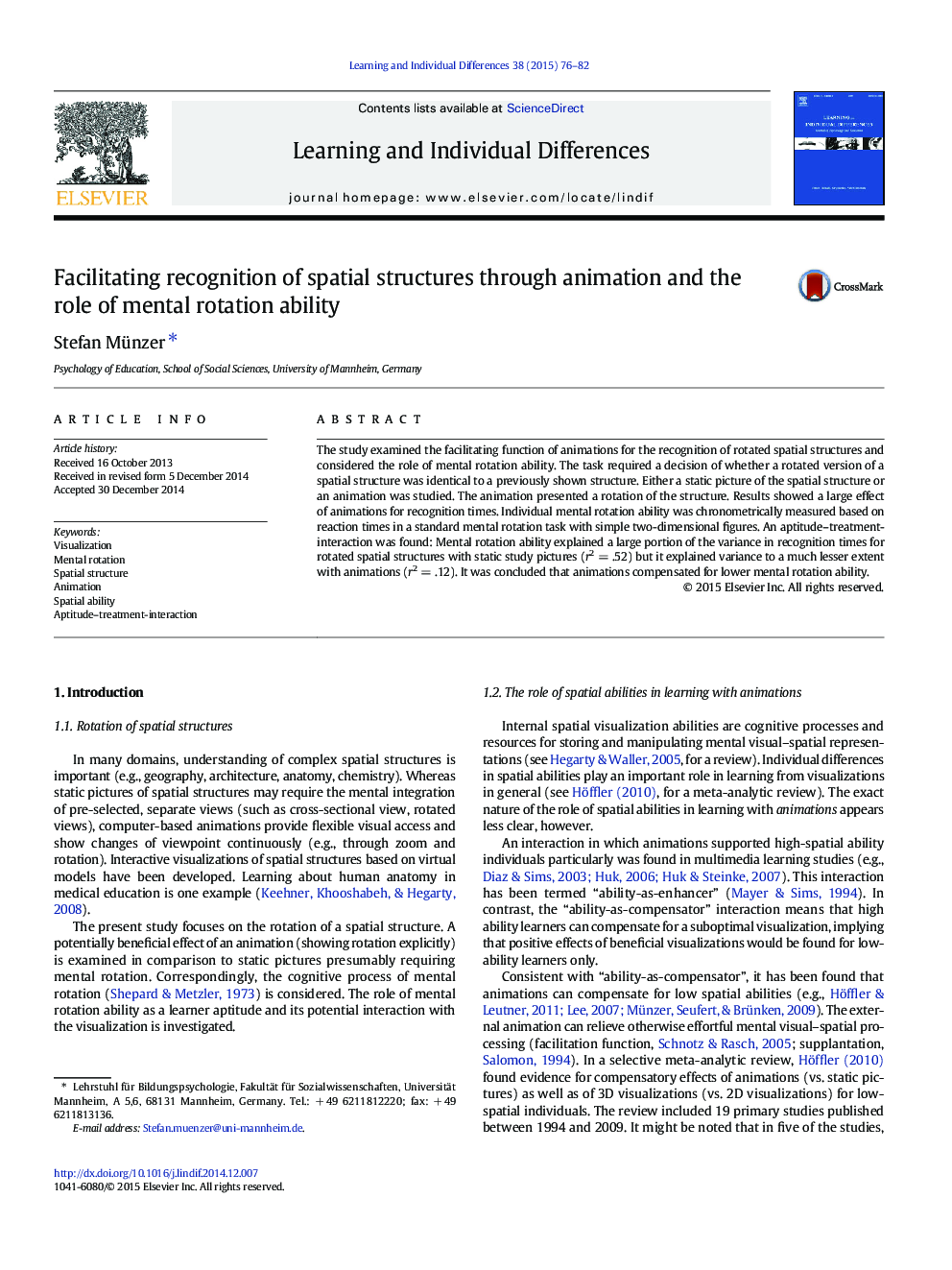| Article ID | Journal | Published Year | Pages | File Type |
|---|---|---|---|---|
| 364625 | Learning and Individual Differences | 2015 | 7 Pages |
The study examined the facilitating function of animations for the recognition of rotated spatial structures and considered the role of mental rotation ability. The task required a decision of whether a rotated version of a spatial structure was identical to a previously shown structure. Either a static picture of the spatial structure or an animation was studied. The animation presented a rotation of the structure. Results showed a large effect of animations for recognition times. Individual mental rotation ability was chronometrically measured based on reaction times in a standard mental rotation task with simple two-dimensional figures. An aptitude–treatment-interaction was found: Mental rotation ability explained a large portion of the variance in recognition times for rotated spatial structures with static study pictures (r2 = .52) but it explained variance to a much lesser extent with animations (r2 = .12). It was concluded that animations compensated for lower mental rotation ability.
